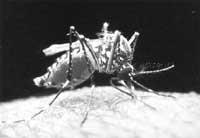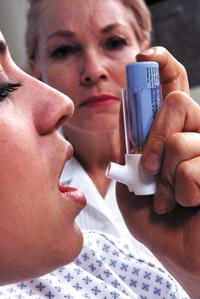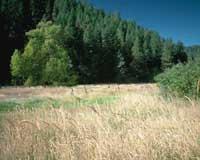Allergy to hymenoptera venom
1996/05/01 Amezaga, Cristian | Bidaurrazaga, Joseba Iturria: Elhuyar aldizkaria
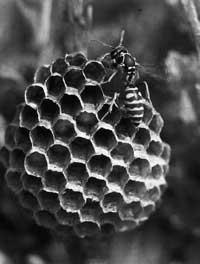
A single handful of the hymenoptera (bee, wasp, bumblebee or curuvion) produces a transient pain in healthy man. On the contrary, in the person allergic to hymenoptera venom does not occur this way, in this case the puyazo can also cause death. First known case of the King of Menes (a. C. Year 2641). It has been discovered that the cause of his death can be read in the wake: “Death is due to the bite of an insect.” Since then a machine has gone and today too. For example, about 40 people die each year as a result of these puyas in the US, 11 in Switzerland and 78 in France between 1958 and 1965.
Clinical case: starting point of the study
A 28-year-old man has been as a hive for 3 years. He has received several bee puyas, but the number of puyas is not specified, but they have caused very painful light increases and have formed without leaving scars. The last puncture collected him in the arm, which caused an increase of two joints and after a few days was completed without taking medication. The latter occurred alone on the ground; it was bitten by a bee and immediately suffered a bite throughout the body (which would later be hives), a vomiting and a dizziness. After an indefinite period of time, go to the outpatient where you are given cortisone and antihistamines. Hours later he recovered.
The consultation carried out several measurements obtaining results such as sedimentation rate, hematimetry and sero IgE were normal and the specific IgE against the bee and very positive skin tests. He received special immunotherapy against bee venom.
Hymenoptera insects| APIDOS | SPIKES | FORMICACEAE |
Cornice bees | Polistas wasps | Ants |
Entomology
Today 800,000 different species of insects are known. They are classified into 34 orders, one of which is the order of the hymenoptera, i.e. containing insects with two pairs of membrane wings.
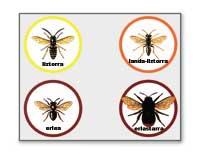
In the order of hymenoptera there are aculeates, that is, insects capable of hitting the punch. Among them are the families of apidos (bees, bumblebees), espidos (wasps, rural listorras, dolicovepulas...) and formicáceos (ants).
In the family of the apidos are the bees ( apis mellifera), with a hairy and brown body and a harpoon-shaped stinger. They inhabit honeycombs where, in addition to storing honey, wax and pollen, they protect the queen, feed her and take care of her larvae. In case of aggression they respond aggressively. Bumblebees are in the same family, larger than bees and have hairy bodies. Their characteristic is the noise they produce when flying. They live on stones or underground, in nests of 50-100 specimens. Unlike bees, bumblebees are not aggressive.
The common wasp (vespula vulgaris) predominates in the family of spies. It is a slender insect with a yellow and black band in the abdomen that ends with a soft punch. Nests in the subsoil where numerous specimens (5,000 and/or 25,000) are collected. The bite of wasps is very painful, but they only attack it in response to the narrow human being. The reaction is similar for field wasp insects ( polystes gallicus) of the same family. It has the same characteristics as the previous one, but hangs its nests from the branches of the trees. Like all wasps, they attack responding to the slender.
| SUBSTANCES | BEES | WASPS | CORNICES |
| Amina-basoactive | |||
Histamine | X | X | X |
Dopamine | X | X | |
Serotonin | X | X | |
Noradrenaline | X | X | |
Acetyl Hill | X | ||
Ephedrine | X | ||
| Toxic amines and peptides | |||
Melitina | X | ||
Apamine | X | ||
mcd-peptide | X | ||
Minimina | X | ||
Quinine | X | X | |
| Enzymatic components | |||
Phospholipase A | X | X | X |
Phospholipase B | X | X | X |
Hyaluronidase | X | X | X |
Acid phosphatase | X | X | |
Sterases | X | X | X |
Glucidases | X | X | |
APD | X | X | X |
Antigen | X |
Risk groups
As is known, anyone can get a hymenopteran bite, but members of the risk groups need special attention. Beekeepers, for example, are in direct contact with insects and tend to show symptoms allergic to bites. Those with a personal or family history also have severe reactions. People who work directly with soil, mountain or nature are the second risk group. Finally, anyone who has had a previous fist is in a dangerous situation, as the second fist can cause a serious reaction.
Causes of the disease
The poison of the hymenoptera glands sometimes causes local manifestations and reactions of the whole body. However, the same reactions will not occur in all cases, since the composition of the poison differs from the characteristics of the person.
As for the component of hymenoptera venom, three groups can be distinguished (see Table 2): amine vasoagents, amine and toxic peptides and enzymatic components. The components of the first group, in addition to producing a painful reaction, can produce increase, redness and loss of functions depending on the intensity and place. Toxic amines and peptides can produce neurotoxic, hypotensive and allergy characteristics. Finally, numerous enzymatic components can be responsible for serious allergic effects.
In addition to the components of the poison, many other factors must be taken into account. The age of allergic people does not seem to be a major risk factor. As for sex, 60% of bites occur in men, probably due to their higher frequency against insects. Analyzing the personal background, 48% remember the local reaction caused by a previous handful, 25% the general reaction and 7% do not remember the previous fist.
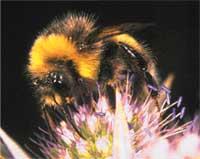
27% of punctured people are allergic to some food, 11% to penicillin and 10% to pollen. Analyzing the family history, 45% of punctured people are allergic to pollen and 12% are relatives who have suffered a general reaction after the sting of hymenoptera.
Clinical manifestation
After the stab of hymenoptera pain in the fist place is inevitable. It usually does not last more than two hours and coincides with the enlargement and redness of the area. It produces no other effect and is completed immediately.
However, among those allergic to hymenoptera venom, the symptoms are totally different, which may be the localized or general reaction. In the first case, the reaction will not exceed the anatomical part that traps more than two adjacent joints. The time between puyas and clinical manifestations is minutes and in some hours the symptoms disappear completely.
The general symptomatology is presented in many different ways. The immediate reaction may appear in minutes and is associated with an IgE-type antigen-antibody reaction.
In addition to the immediate, there may be a late reaction that appears about fifteen days after the fist, even if it is not very normal. The substance that produces this reaction is considered to be an antibody antigen not associated with IgE. Its clinical symptoms are Guillain Barre syndrome, intellectual loss that can cause encephalitis, meningeal syndrome, glomerulonephritis, etc. can be.
As mentioned earlier, the sting of these insects can in some cases lead to death. They precede anaphylactic shock and tension drop, edema spread, loss of knowledge, loss of intelligence and coma states.
Steps for diagnosis
To assess whether a person is allergic to hymenoptera venom, there are three main tests: anamnesis, skin tests, and sero studies. In order to determine the anamnesis it is necessary to collect many data about the bite, such as whether the insect causing the puyazo has been a hymenoptera or another type, whether it is a toxic reaction (result of a simultaneous puncture of many insects) or whether it is an allergic reaction.
The medical history is completed with skin tests. This requires specific training so that, beyond the risks arising from these tests, there are no errors in the interpretation of the results.
Finally, sero research is carried out, that is, tests based on the measurement of IgE specific to the venom of hymenoptera.
SYMPTOMS%General itching Hives throughout the body Dispersed edema Dyspnea Weakening of pressure Loss of consciousness Vomiting and diarrhea Tachycardia Feeling of distress Headache Other
53 43 43 43 30 27 26 18 14 12Treatment
Emergency treatment consists of placing ice at the place of the puncture and as soon as possible attending or moving to the hospital. In addition, it is recommended to remove the punch as soon as possible, since in some cases the punch is of harpoon appearance and flows in some contractions for 5 and 10 minutes. Once the background of the person is analyzed, we can know if he can suffer a general reaction, so he places the tourniquet and is introduced under the skin 0.4 ml of adrenaline, making lie in the shade with legs raised. Cortisonas and antihistamines may also be used if necessary.
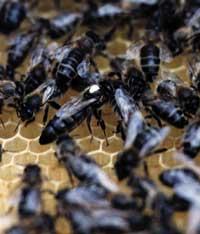
The most common treatment for allergy sufferers is tolerance, i.e. increasing the default dose based on personal history and under medical control.
Prevention
Although not to be said, the golden rule is not to approach those ugly. However, this is not as simple as it seems, as in spring or summer those who approach us not the other way around. We avoid the use of aromatic perfumes or colonies that attract colorful clothes and insects and we will move away from espadrilles or stables. You also have to look at time, since when there is a lot of electrical charge in the environment, insects are more aggressive.
On the other hand, who knows that it is “high-risk”, carry with it adrenaline, antihistamines and cortisone, which can help you.

Gai honi buruzko eduki gehiago
Elhuyarrek garatutako teknologia




